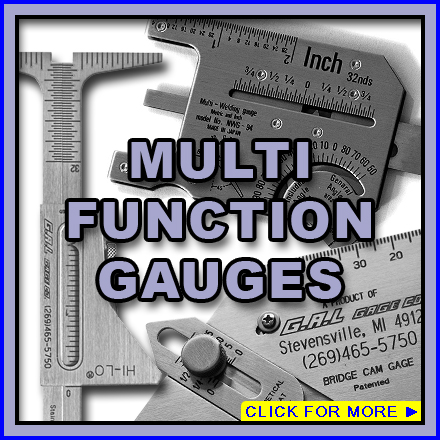Gauge Fillet Weld Essentials: Ideal Practices and Common Mistakes
Gauge Fillet Weld Essentials: Ideal Practices and Common Mistakes
Blog Article
Fillet Weld Style Techniques: Maximizing Joint Performance and Aesthetics for Structural Stability
In the world of structural engineering and manufacture, the importance of fillet weld design strategies can not be overstated. By diligently thinking about aspects such as weld profile optimization, product option, joint prep work methods, welding process performance, and visual improvement makers, methods and designers can accomplish a harmonious balance between functionality and appearance in their bonded structures.
Weld Profile Optimization


Attaining an ideal weld profile involves a meticulous factor to consider of elements such as product thickness, joint configuration, welding position, and preferred welding rate. In addition, the selection of suitable welding specifications, such as voltage, existing, and travel rate, is fundamental in controlling the form and measurements of the fillet weld. Making use of advanced welding strategies, such as pulse welding or robotic welding, can better improve the weld account to satisfy particular layout demands and high quality standards.
Fundamentally, weld profile optimization is an essential aspect of fillet weld style that straight affects the total efficiency and dependability of welded joints in structural applications.
Product Option Factors To Consider
When considering material choice for fillet weld design, the compatibility of the base steels is an essential element influencing the architectural stability of the joint. It is necessary to pick products that not just weld together successfully but also have comparable mechanical residential properties to make sure the tons is equally dispersed between the weld and the base metals. Welding materials with significantly various homes can bring about concerns such as stress concentrations, early joint failing, or splitting.
In addition, the setting in which the bonded structure will certainly run should be taken into consideration when choosing products. Aspects like deterioration resistance, temperature level changes, and direct exposure to chemicals can all influence the durability and efficiency of the weld joint. By choosing products that are suitable for the desired application and environment, the overall durability and integrity of the bonded joint can be substantially improved.
For that reason, complete consideration of product compatibility and ecological aspects is vital in making sure the weld joint's strength, toughness, and overall architectural honesty.

Joint Prep Work Techniques
Considering the vital duty product selection plays in guaranteeing the structural why not try here integrity of fillet weld joints, it is crucial to implement specific joint prep work techniques that optimize the connection between the base metals. Joint prep work is a critical action that straight influences the quality and strength of the weld.
Additionally, tack welding the parts in location before the final weld assists preserve alignment and minimizes distortion throughout the welding procedure. By thoroughly following these joint prep work techniques, welders can boost the overall efficiency and appearances of fillet weld joints while guaranteeing structural soundness.
Welding Process Effectiveness
Effective welding processes are crucial for accomplishing optimum efficiency and quality in fillet weld construction. Procedures like gas steel arc welding (GMAW) and flux-cored arc welding (FCAW) are typically used for fillet welds due to their versatility and speed.
Normal calibration of welding machines, examination of consumables, and maintenance of welding lanterns can stop downtime and rework, eventually saving time and sources. Well-trained welders are more proficient at adjusting parameters, repairing problems, and keeping constant weld high quality.
Visual Enhancement Approaches
To enhance the quality of fillet weld manufacture, applying visual enhancement techniques can play a crucial role in guaranteeing accuracy and accuracy find during the welding procedure. Aesthetic improvement approaches encompass numerous methods targeted at enhancing the look and quality of fillet welds. One typical approach is making use of back purging systems to remove oxidation on the behind of the weld, resulting in a cleaner, extra aesthetically pleasing coating. Furthermore, utilizing appropriate lights setups in the welding area can improve visibility, permitting welders to monitor the weld pool and guarantee consistent bead development. Aesthetic aids such as weld dimension gauges and multiplying lenses can aid in examining weld profiles and dimensions accurately. The usage of contrasting marking materials or momentary adding can help in aligning and placing the work surfaces exactly prior to welding. By incorporating these visual enhancement approaches right into the welding process, welders can achieve not just structurally audio fillet welds however also visually enticing results that satisfy industry criteria.

Conclusion
In final thought, enhancing fillet weld design includes cautious factor to consider of weld profile, material choice, joint preparation, welding procedure effectiveness, and aesthetic enhancement techniques. By carrying out these methods, architectural stability can be boosted while also achieving visual charm. It is vital to focus on both efficiency and appearances in fillet weld design to guarantee the general quality and sturdiness of the joint.
By meticulously taking into consideration factors such as weld profile optimization, product choice, joint preparation strategies, welding procedure effectiveness, and visual improvement engineers, makers and methods can attain an unified balance in between functionality and look in their bonded frameworks.In the world of fillet weld style, maximizing the weld account plays a vital role in guaranteeing structural integrity and performance. The weld account, which includes the size and form of the weld cross-section, directly impacts the circulation of tension and load-bearing capability within the joint. It is crucial to choose products that not only bonded with each other effectively but additionally have comparable mechanical properties to make sure the tons is evenly dispersed in you could check here between the base and the weld steels - Gauge Fillet Weld.In final thought, enhancing fillet weld layout entails mindful factor to consider of weld profile, product choice, joint prep work, welding process efficiency, and aesthetic enhancement methods
Report this page